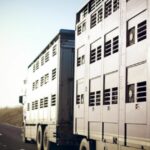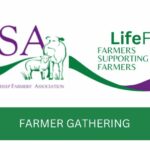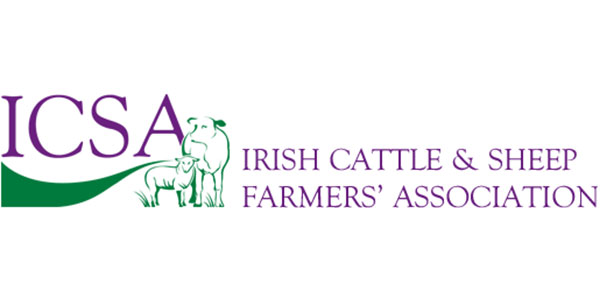Monday, March 23, 2015
This story appeared in the printed version of the Irish Examiner Monday, March 23, 2015
The ending of the milk quota regime is one of the most momentous occasions in Irish agriculture in generations.
Some are anxious about the potential destabilisation of dairy markets and the likely impact on price volatility. Others see opportunity to develop their farms without the straitjacket of quotas.
The impact of the milk quota regime has been fundamental to shaping the development — or stagnation — of Irish agriculture over the past 30 years.
The key trend has been a phenomenal reduction in the number of dairy farmers, from 76,000 when quotas came in, to some 17,500 today.
No doubt many would have been lost through retirement or lack of scale even without quotas, but still, it hardly seems appropriate that of the 125,000 farmers claiming EU supports, only 17,500 are milking cows in a country which is ideally set up for dairying.
There can be little doubt that many potentially successful young dairy farmers were lost due to the frustrations and difficulties of an inflexible quota system.
The problem was especially acute in Munster, where Cork-based co-ops were permanently stuck with inadequate quota and where every drop of extra quota via schemes such as restructuring, flexi-milk, and quota exchanges was keenly fought over.
Although farm organisations seemed opposed to milk quotas at the outset, they quickly settled in to accepting and even welcoming them.
I recall legendary farm leaders doing themselves no credit in shouting down and taking an intimidatory approach to young farmers who dared stand up and outline the case for abolishing quotas back in the 1990s.
It is self-evident that the quota regime has been the most important factor in driving the expansion of the suckler herd from around 400,000 cows pre-quota to some 1m today.
The typical pattern has been that where a dairy farm closed the parlour door, suckler cows replaced the dairy cows. In many cases, where there was a successor, the plan was sucklers instead of dairy cows plus an off-farm job.
For a fortunate few, the off-farm job has worked out well, with good career prospects; for many, off-farm income meant temporary times of plenty linked to the building boom, followed by famine when the sector crashed.
Suckler growth was also helped, obviously, by coupled subsidies and probably more importantly by live exports. When cattle are scarce, suckler farmers who produce export grade weanlings can get good prices — averaging €1,000 per head or better for the very best — and possibly there is a long-term future for them. In truth, however, headline figures often mask huge costs and inefficiencies in the system.
Analysis of Teagasc stats suggess the cost of keeping a suckler cow is €650, but factor in unproductive cows and the real cost per productive cow is €800. The €1,000 weanling is, in reality, the exception. In years where markets are down, even the best will struggle to hit this average and many suckler farmers struggle to average €750 even in good years.
Given these realities, it’s difficult to understand the obsession of many farm leaders with keeping a national suckler herd of 1m.
After all, what use is it to the suckler farmer — other than vanity — to be part of an enterprise that often contributes more than €1bn to our beef exports and helps beef barons into the rich lists, while suckler farmers are forced to prop up the enterprise with EU subsidies and off-farm income? That’s why ICSA believes the new Agri 2025 strategy must be solely focused on profitability at farm gate, not national output figures.
However, there’s just no getting away from the profitability gulf between dairying and other enterprises. If we take the Teagasc National Farm Survey, the average dairy farm made an aggregate family farm income of €247,887 over the five-year period 2009-2013, compared with €66,332 for the average suckler farm and €70,981 for sheep. This is a useful comparison because it includes the annus horribilis for dairying of 2009, widely seen as the worst year for dairying in a generation.
Income per ha in 2013 was 4.5 times better for dairying than suckling. Even over a longer timeframe, any young farmer planning a long-term future in farming cannot ignore the realities that dairying is consistently three times more profitable than sucklers, beef or sheep. Many will cling to the hope that better times are ahead for beef, with all the positivity around new markets, but history lends little comfort to the beef optimists.
It is also wise to sound a note of caution. Stories of young farmers tying themselves into long-term leases of land at €300/acre should set off alarm bells. For the majority, however, opening up of opportunity in dairying is to be welcomed, particularly on natural dairy land.
It is possible that there will be spin-off benefits for beef farmers who might be better off contract-rearing heifers for dairy farmers than the annual gamble at beef. Some will also be tempted by the attractive tax arrangements for long-term leasing.
Nonetheless, this is mainly a story about options for young dairy farmers. Notwithstanding valid complaints from young farmers about Pillar I payment unfairness, this is an exciting time to start farming where suitable land is available.
Milk quotas sucked the energy from and frustrated a whole generation of farmers, and their abolition is — on balance — good news for the next generation. Especially with low interest rates, the opportunities are better now than at any time in the past 30 years for those who are careful not to over-extend.
Eddie Punch, ICSA General Secretary




